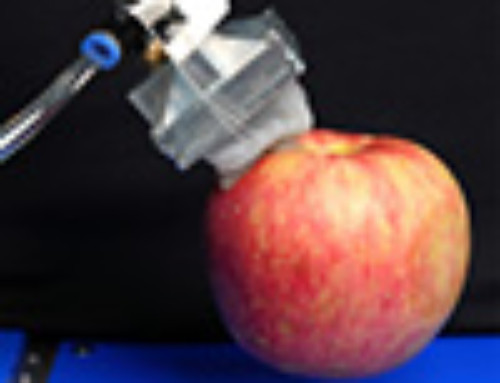[ad_1]

Considering the rampant popularity of gadgets like smart speakers, some people might say there’s no better time for the consumer robotics market to boom. But despite the world’s love of high-tech devices, consumer robots haven’t won widespread appeal — yet.
A Slew of Consumer Robotics Company Shutdowns
One of the most telling indicators of trouble is the news of various consumer robotics companies closing. Anki, a San Francisco-based company that made a tabletop robot called the Vector, is among the latest to have that fate. Analysts point out that although Vector was “cute,” it lacked a definitive purpose.
Jibo also had an unfortunate end. That Boston company launched in 2012 and had a successful crowdfunding campaign on Indiegogo that raised more than $3.5 million. The company made a social robot that performed many of the same tasks as a smart speaker, such as playing music and activating smart home tech.
However, Jibo also had advanced facial and voice recognition that allowed the robot to recognize more than a dozen people. In late November 2018, Jibo sold its intellectual property assets and ceased doing business. However, problems for the company started earlier, when the brand delayed its Indiegogo shipments.
In early March 2019, Keecker, a French company in the consumer robotics space, also stopped operating. The CEO and founder confessed that the company ran out of cash and could not find enough investors to keep going.
These unfortunate conclusions suggest that today’s marketplace is not sustainable for some consumer robotics companies. Still, ending on that conclusion is too short-sighted.
The Global Market Is Growing
Although there are the sad tales mentioned above, analysts predict global market growth for the consumer robotics market. Statista predicted the global worth of the domestic robotics market from 2015-2025 and anticipates a 2025 value of $4.4 billion, up from the 2015 market worth of $1.2 billion.
Another report from Tractica looked at the global market in terms of units shipped. It forecasted that shipments of consumer robots would rise from 15.4 million in 2018 to 65.8 million units annually by 2025. Additionally, it expected strong momentum in the Asia-Pacific countries.
Specificity May Help
Enterprise clients often rely on industrial robotics. The most successful implementations typically occur when company leaders know exactly which tasks they want the robots to handle. For example, a pneumatic arm could assist with tasks ranging from welding to material removal. The pneumatic arm itself is a multiply talented piece of equipment, but clients often know precisely how they’ll use it before investing in the machinery.
If consumer robot manufacturers gave extremely detailed or niche use cases that were unlike what other types of tech could accomplish, they might find more success. That’s arguably one of the reasons why the Roomba robotic vacuum is so popular. It takes a different approach to specificity by doing only one task — cleaning floors.
iRobot is the company behind the Roomba, and it recently released details about its 2018 earnings. Revenue for the company grew 24% that year, and that the company exceeded expectations in the Japanese market.
To go back to the pneumatic arm example in the industrial robotics market, clients generally have a specific goal in mind before investing in such equipment, such as increasing employee productivity or cutting operating expenses. Similarly, when consumers buy a Roomba, they know doing so will help them get crumb-free floors with less labour.
Maybe specificity will help other robotics companies prosper. Instead of building robots that do dozens of things, the better route may be to design robots that meet defined consumer needs.
How Robotics and Automation Are Changing the Construction Industry – Mobile & Service Robots | https://t.co/vJd4vKh5jN https://t.co/qkNDnP26ur
— Kayla Matthews (@KaylaEMatthews) April 16, 2019
English Shoppers Love Robots That Deliver Things for Them
When people think of consumer robots, machines that do things around the house typically come to mind. But maybe people need to broaden their views about consumer robots to include ‘bots that bring items to shoppers.
In Milton Keynes, a large English town about 50 miles from London, consumer delivery robots are taking off. Since the introduction of the robots to the town last year, the number of homes served grew by 450%. One woman, who was the 50,000th recipient of a delivery from a robot in the town, said she’d already made more than 100 orders through the service and had no plans to stop.
The robots help people who want to engage in “top-up shopping,” meaning they buy smaller quantities of things throughout the week after running out of them instead of doing less frequent but larger shopping orders. Milk and bread are some of the most common things people buy with robot deliveries.
As this example shows, people in Milton Keynes appreciate the robot delivery units. The machines are showing up in other places, too, such as on the campus of George Mason University in the U.S.
Price Poses Another Potential Setback
Analysts who weighed in about the demise of Anki and other consumer robotics companies pointed out that robots without bodies do well in the consumer marketplace. They meant that Amazon’s Alexa, the virtual assistant inside of the brand’s smart speakers, can do everything physical robots can and more.
Some also mentioned how people can buy Amazon’s speakers for under $100, but that some other consumer robots on the market might cost eight to 10 times as much. They suggest that many consumer robots fail because they cost too much without justifying the price by doing something Alexa can’t.
There’s Still Hope for Consumer Robots
The information here shows that it would be hasty to assume the world is not ready for consumer robots. Even so, some changes need to happen so that the products currently available, or arriving soon, more closely align with people’s needs and budgets.
You can read some of Kayla’s other articles here:
https://irishtechnews.ie/first-ever-national-5g-network-being-created-in-south-korea/
https://irishtechnews.ie/6-challenges-to-be-overcome-for-edge-computing-to-work/
Kayla Matthews is a researcher, writer and blogger covering topics related to technology, smart gadgets, the future of work and personal productivity. She is the owner and editor of ProductivityTheory.com and ProductivityBytes.com.
If you would like to have your company featured in the Irish Tech News Business Showcase, get in contact with us at [email protected] or on Twitter: @SimonCocking
[ad_2]
Source link





Leave A Comment
You must be logged in to post a comment.